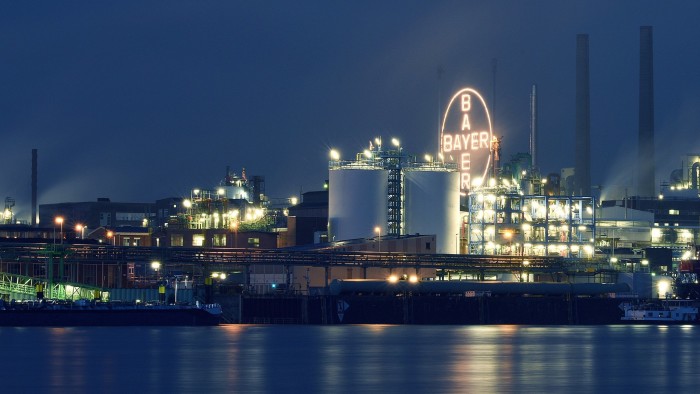Watchdogs weigh up pros and cons of seed mergers

Roula Khalaf, Editor of the FT, selects her favourite stories in this weekly newsletter.
When Werner Baumann and Hugh Grant unveiled their $66bn agreement for Germany’s Bayer to acquire US seeds maker Monsanto, the respective chief executives hailed the transaction as nothing short of a combination vital for the future of mankind.
Addressing investors after the September deal was announced, Bayer’s Mr Baumann said the world’s population is forecast to grow by an additional 3bn by 2050. This, he said, would require a huge increase in food production to meet demand.
“The combination with Monsanto represents the kind of revolutionary approach to agriculture that will be necessary to sustainably feed the world, as we enable growers with a broad set of enhanced agriculture solutions,” declared the Bayer head.
That reasoning has been chief among the arguments put forward by the world’s leading agribusiness companies as they seek to complete an unprecedented wave of consolidation.
But whether this rationale is just self-interested corporate finance spin, or truly reflects the industrial imperative of improving efficiency across the sector, remains one of the biggest questions hanging over completion of the deal.
Alongside Bayer’s deal for Monsanto, US companies Dow Chemical and DuPont are in the process of trying to complete a $130bn merger agreed late last year.
Under the terms of that deal, the companies would split into three standalone businesses, including one that would be focused on agribusiness and have annual sales of around $20bn.
Both deals would bring together a leading seed producer with a powerful provider of crop sprays.
In February, Chinese conglomerate ChemChina struck a $43bn deal to buy Swiss chemicals company Syngenta in a transaction that will dramatically bolster its crop protection products. That deal itself ended a multi-month saga in which Syngenta escaped an unsolicited takeover bid by US rival Monsanto and failed to buy DuPont’s seed business.
Crucially, all these deals, which have a combined value of about $240bn, are now up for review by global regulators. If they are passed, that will concentrate more than 60 per cent of the global supply of seeds and crop chemicals to farmers in the hands of just three companies.
Questions surrounding how concentration in the sector will impact on pricing power, as well as future research and development, are central to whether the transactions receive approval.
In outlining the European Commission’s initial statement of concerns for the Dow-DuPont deal earlier this year, Margrethe Vestager, the head of competition, said: “The livelihood of farmers depends on access to seeds and crop protection at competitive prices. We need to make sure that the proposed merger does not lead to higher prices or less innovation for these products.”
Those same questions are likely to apply to Bayer and Monsanto. By combining Monsanto’s ability to genetically modify seeds with Bayer’s chemistry, the companies argue that in the short-run they will be able to extend their reach to more customers and offer a greater suite of products.
Longer term, the companies argue the deal will encourage innovation that will help address future food shortages, whether through the application of technology or the development of new products.
Bayer and Monsanto have said they are confident that the deal will receive approval because of the complementarity of their products and the fact that they do not have much geographic overlap.
But there are sceptics who disagree with these arguments in favour of consolidation. Analysts at Bernstein, a research company, say that agribusiness groups have yet to demonstrate that genetically modified seeds have actually helped to increase farmer output.
“A common argument for genetically modified seeds focuses on the need for improved yields, especially if we’re going to ‘feed the world’,” says Jonas Oxgaard, a chemicals analyst at Bernstein. “However, genetically modified products in their current form do not actually improve yields, nor were they designed to. [Instead] genetic engineering has been focused on reducing cost and farmer labour.”
There are fears that the mergers could reduce options for farmers in categories where they already face limited choice. That led interested parties, including the National Farmers Union in the US, to condemn the dealmaking.
Indeed, many investors in the sector concede privately that the Bayer-Monsanto and Dow-DuPont deals are designed to offset a slowdown in the sector. Agribusiness profits have been squeezed by a fall in spending by farmers that has resulted from lower commodity prices over the past three years.
They say that is why Monsanto itself tried on a number of occasions in the past four years to acquire Syngenta, before ending up a target.
Mr Oxgaard says the rulings of competition authorities will be crucial. “If competitive pressure is truly upheld, I don’t think the industry consolidation will mean that much,” he says. “But if it is consolidation that creates an oligopoly, that means higher prices and probably less research.”
Comments